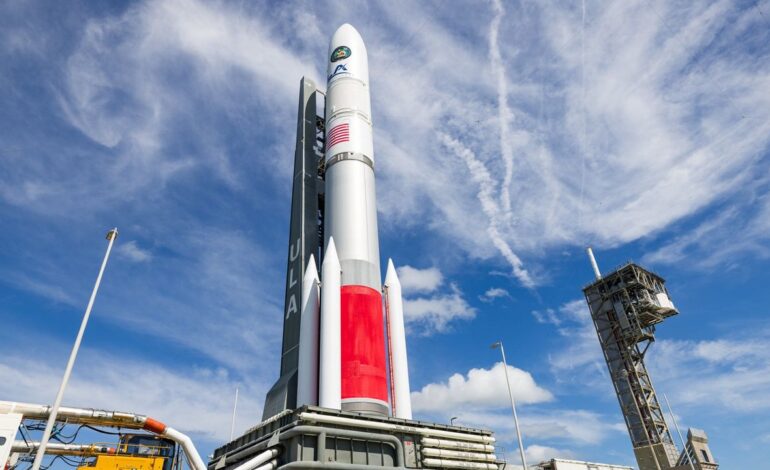ULA Launches Experimental Military Satellite with Vulcan Centaur

United Launch Alliance (ULA) successfully launched its most powerful Vulcan Centaur rocket on August 12, 2025, marking a significant milestone for the U.S. military. The mission involved deploying the Navigation Technology Satellite-3 (NTS-3), an experimental navigation satellite designed to enhance military positioning and timing capabilities. The liftoff took place during a one-hour launch window that opened at 7:59 p.m. ET (2359 GMT), from Space Launch Complex 41 at Cape Canaveral Space Force Station in Florida.
Weather conditions were favorable, with a predicted 75% chance of clear skies at launch time. The Vulcan Centaur rocket utilized four side-mounted solid rocket boosters to generate the necessary thrust, enabling it to deliver its payload directly into geosynchronous orbit. This journey is one of ULA’s longest, spanning over 22,000 miles (35,000 kilometers) and lasting approximately seven hours.
Innovative Technology for Military Applications
The NTS-3 satellite represents the first experimental navigation satellite launched by the U.S. military in 48 years. It functions as a position, navigation, and timing (PNT) satellite, providing data comparable to the widely used GPS system. This mission is crucial for testing advanced technologies designed to improve resilience against jamming and spoofing, a growing concern for military and commercial satellite operators alike.
According to Andrew Builta of L3Harris Technologies, the prime contractor for the satellite’s PNT payload, NTS-3 features a sophisticated phased array antenna. This technology allows the satellite to focus powerful beams toward ground forces, effectively addressing jamming threats. Builta emphasized that the satellite’s software architecture enables it to be reprogrammed while in orbit, a capability he described as “truly game-changing.”
Vulcan Centaur’s Performance and Future Missions
The Vulcan Centaur rocket, standing at 202 feet (61 meters), has achieved two successful flights prior to this mission. Its inaugural flight in January 2024 launched the Astrobotic’s Peregrine lunar lander, though the lander experienced an anomaly and fell back to Earth. The second flight, conducted in October 2024, aimed to launch a mass simulator for the Sierra Space’s Dream Chaser space plane but also encountered an anomaly shortly after liftoff. This issue was traced to a manufacturing defect in one of the solid rocket boosters.
Despite these setbacks, the U.S. Space Force certified the Vulcan Centaur for national security missions, underscoring its reliability. This certification adds ULA to the list of launch providers qualified to deploy military and spy satellites, alongside SpaceX. The Vulcan Centaur has already been designated for over two dozen national security missions for the U.S. Space Force, capable of launching from both Cape Canaveral and Vandenberg Space Force stations.
Today’s mission not only highlights the technological advancements in military satellite systems but also reinforces ULA’s commitment to supporting national security objectives through innovative launch solutions.






